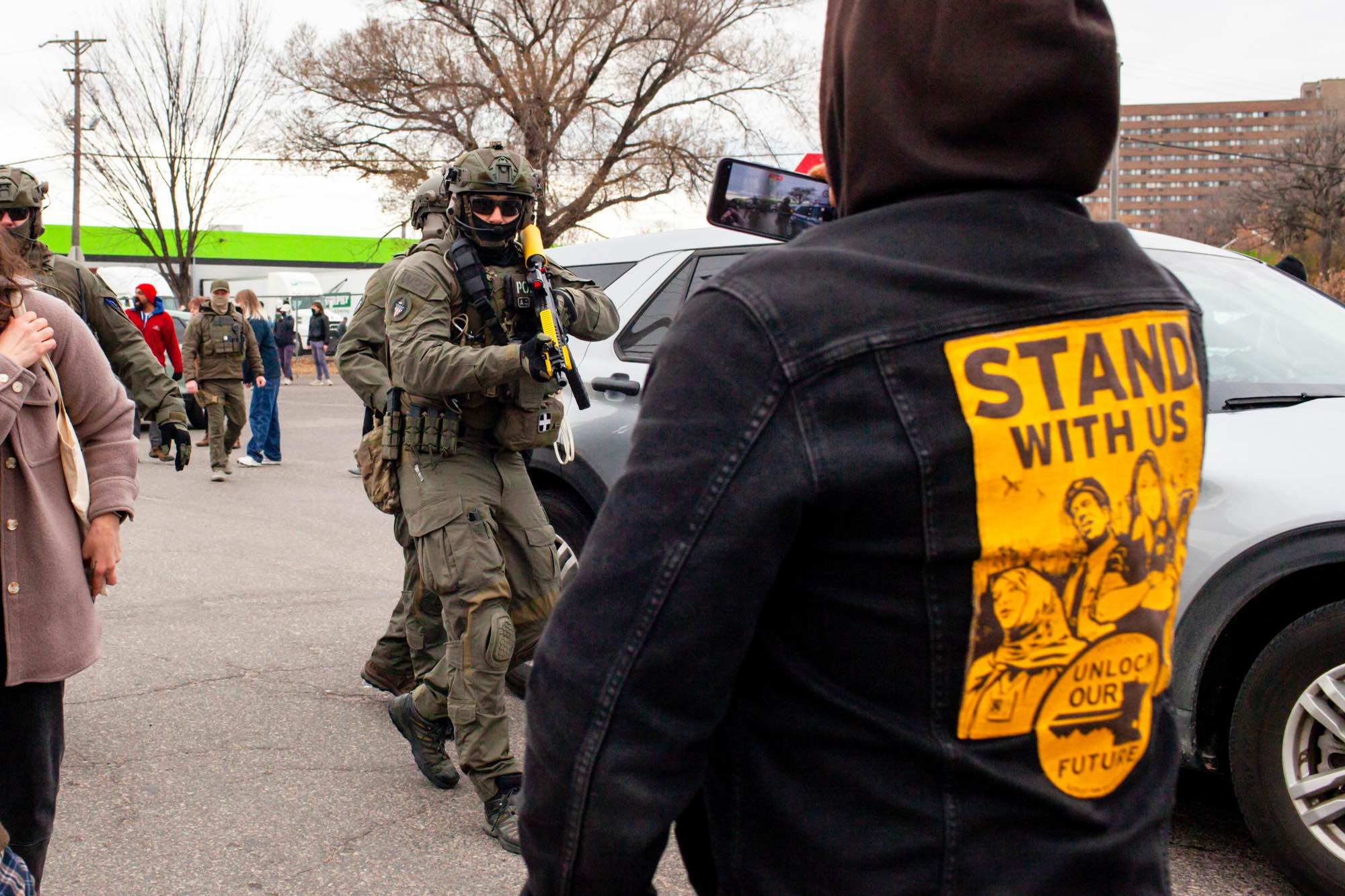
In Chile, in response to student protests against an increase in the cost of public transportation, the President has returned the country to dictatorship-era martial law, putting soldiers on the streets and threatening protesters with decades in prison. The following report comes directly from the streets of Santiago at the epicenter of the fighting. You can read an update to this story here, including an interview with a Chilean anarchist and a call to action from other participants in the revolt.

“We pay the cops’ salary and the ticket fare, and here they stand against us.” “The people united will never be divided.”
Friday’s conflagration took place following a week of action against fare increases under the slogan “evade” or evade y lucha (“dodge the fare and struggle”), which now appears on nearly every wall downtown in spray paint. It all started as a playful response to the government increasing the cost of living by hiking transport costs. Almost entirely student led, the mobilization has included mass evasions in metro stations in which students run through the turnstiles together and hold open the gates to encourage everyone else to join them in riding for free. Police have reacted with tear gas and batons.

“Evade the fair, don’t pay—another form of struggle.”

“Evade and Struggle.”
On Friday, protesters responded by targeting the stations themselves, breaking apart the gates and turnstiles and even using them as weapons to defend themselves from police attacks. Many metro lines shut down; mid-afternoon, we received word that the metro will be shut down for the whole weekend.

Students taking over a metro station.
With some busses still running, the lines at bus stops swelled to overflowing, with long wait times. Protest marches began taking the streets as metros were shut down, causing more delays for the busses still transporting people. Many people started walking on the roads instead; it began to feel like a snow day, when everyone is just out and in the streets, a strange and ecstatic energy.
Student reinforcements arriving at that metro station.
Meanwhile, harrowing footage circulated showing a student shot by police with live rounds during a fare protest. Her condition remains unknown. Unrest was reported to be especially intense in her neighborhood, las Parcelas. As of this writing, there have been multiple reports of people shot by police.

As the sun went down, the city caught fire. Busses burned. Blockades appeared in the street in many neighborhoods where neighbors came out to bang pots and pans (a traditional form of protest known as cacerolazo), burning couches, tires, and whatever else they could find in the area. Rebellion spread throughout the city, much farther than the original metro centers. Clashes with police escalated throughout the night until the president declared the state of emergency, recalling the military dictatorship of 1973-1990 during which thousands of people were “disappeared” and murdered.

The headquarters of the Italian energy company Enel, over a dozen stories high, caught fire, though the cause is not confirmed yet. While some assume it was torched by arsonists, others speculate that the blaze may have been ignited by a tear gas canister.
https://twitter.com/BorisvanderSpek/status/1185365065228312576
The entity that controls the Santiago Metro network has already confirmed that there will be no service over the weekend, and the Chilean student federation has called a nationwide strike for Monday. As of now, it remains to be seen whether the unrest will spread and deepen, but if the military kills someone, the country is bound to explode. The memories of the dictatorship are too fresh, too raw, for people to stand by passively.

Chileans remember the betrayals of democracy too well to be appeased by a simple reform like a reduction in public transit fare. After the massive clashes in Ecuador, it appears that things are returning to normal now that the Ecuadorian president has walked back the austerity measures in his budget proposal; but this outbreak of defiance shows that anger has been simmering for a long time in Chile, and it will not be easy to silence it.
Chile has a long history of social struggle dating back to its colonial origins. Today’s combative social movements are descended from the resistance to the mass-murdering military dictatorship of Augusto Pinochet; their lineage has continued uninterrupted because the transition to democracy in 1990 was not accompanied by any meaningful shift in the economic policies and violent policing that impose extreme disparities in wealth and power. This particular revolt is reminiscent of the uprising in Brazil in 2013, when a million people took the streets to protest an increase in the cost of public transportation.

We will see what happens next.
For images of the clashes, these four Instagram accounts have provided consistent updates.
For background on Chile’s longstanding combative social movements:
The Student Movement in Chile: From Dictatorship to Democracy, the Flame of Revolt
The Chicago Conspiracy—A documentary addressing the legacy of the military dictatorship in Chile, revisiting the stories of the young people who were killed by the Pinochet regime as a backdrop to the history of the military dictatorship. The film follows this narrative thread into current forms of social conflict including the student movement, the neighborhoods that resisted the dictatorship and continue to resist capitalism and state oppression, and the continuing defiance of the indigenous Mapuche people.


